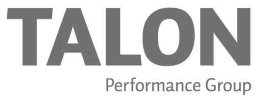When it comes to hiring or promoting talent, organizations have shifted 180 degrees in the partnerships they are seeking. In just a handful of years, we have gone from the scenes of the 90’s and early 2000’s, when the economy was booming and organizations were just happy to get warm bodies in the door – to a strong, immediate reaction of downsizing and cutting out development programs – to today, where we see an increased internal sophistication in our organizations. This increased sophistication of talent in our organizations allows them to effectively identify and solve their own problems as well as recognize the importance of value through shared risk; this creates a shift in partnerships being sought to people who can do that, too – the “right people.”
Organizations now want to get the right person in the right seat, across the board. So what determines “right person” or can you do anything to influence being the “right person?” At the core, it’s a vital skill set. Whether you are looking to hire top talent (employees and outside service providers), grow a business with the right clients, or elevate yourself internally as a high performer with potential for promotion, the following three skills are critical to the achievement of these ambitions.
- Agility – moving quickly and easily in many situations; displaying nimbleness and the ability to think and draw conclusions quickly. Agility is key in many settings, including:
- Learning: the willingness to be adaptable and confront what one does not know how to do.
- Interactions: learning from experience and demonstrating resilience under pressure.
- Seeking results: getting results under tough conditions building confidence in others.
- Intellectual pursuits: thinking through problems from a fresh point of view, being comfortable with complexity, and successfully explaining thinking to others.
- Change: curiosity and passion for ideas; enjoyment of skill-building activities.
- Resilience– the ability to recover quickly (from change, illness, or misfortune).
- EQ – Emotional Intelligence. How one responds to and uses emotions to inform decisions and actions based on outside stimuli.
Each of these skills correlates significantly with someone who has high potential, has good-to-excellent performance and who stays out of trouble.
Interestingly, studies have shown that these three vital skills are NOT related to IQ or personality variables. What does this mean? It means that most people can learn and hone these skills – it is not a situation where you either have them or you don’t. Yes, you achieved in school, you are successful in your chosen career path – you are intellectually smart. Perhaps you are even likeable! So ask yourself, “How do I rank on agility, resilience and EQ?” You might not know. This knowledge demands self-awareness and the willingness to hear what others think about you and/or observe in you.
Given that agility, resilience and EQ are learned behavior for most people, here are some options to consider if interested in honing these skills:
- Seek out a professional coach or talent agent. You will receive honest feedback and most importantly, suggested actions you can take to increase your fluidity in these areas on a day-to-day basis.
- Ask your friends, peers, colleagues, clients what they see in you in each of the above areas. Let them know you are increasing your awareness and want to further your skill in those areas – ask for specific examples or situations so you can have clarity in what they are observing. You also might ask what they would suggest as behaviors they would have liked to have seen for different outcomes.
- Engage in a full circle (also known as a 360-degree) assessment. A full circle assessment is a clear and tangible way to measure where you are now and areas where you could make improvement to enhance your opportunities for success. This tool provides a baseline measure in which you can easily gage improvement over time. It also allows for confidential, anonymous feedback from various people in your life, which is likely to provide true and real information for you.
Some of you will find the knowledge of these vital skills or differentiators interesting. However, many of you will ignore the opportunity to advance through these recognized differentiators and will continue to operate as you always have – which, unquestionably, has worked well for you on many occasions in the past. A small percentage of you, however, are adaptors who are primed to elevate and will follow these differentiators as stepping stones, accelerating you to the next level of success. In this new and changing world, this differing approach to the proven vital skills will define “right” for our new hires, our promotions, our selection of outside provides, our engagement with our clients …and for our own path to success.
